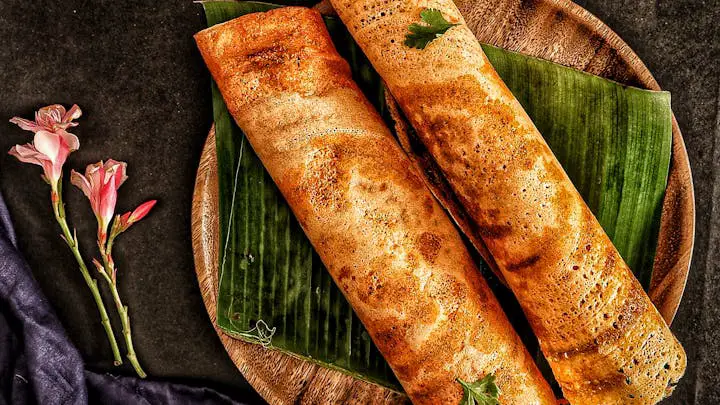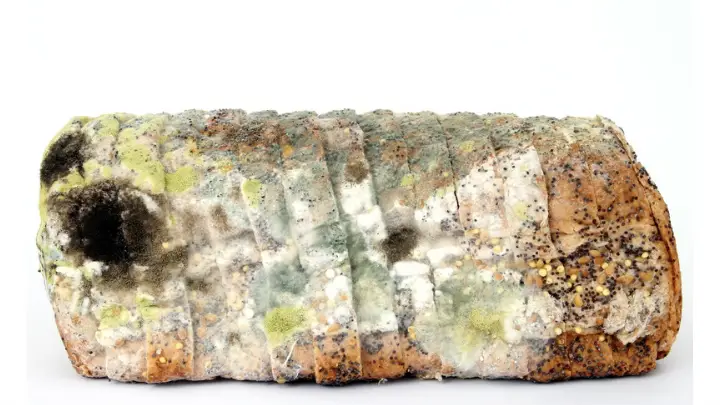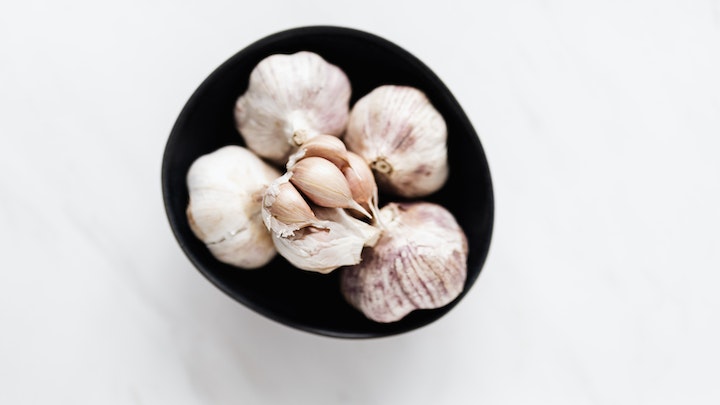Savor a plate of South Indian food for your next vegan meal. It is delicious, nutritious, and easy to make. This journey explores the vegan diet while introducing befitting dishes hidden in this authentic vegetarian cuisine.
What is a Vegan diet?
A vegan diet is exclusively plant-based. Those following this diet do not consume animal or their by-products.
Thus, poultry, seafood, meat, insects, eggs, dairy products (milk, butter, cheese, yogurt), honey, and so on are avoided.
How is vegetarian South Indian food vegan-friendly?
A wide array of rice grains, lentils, vegetables, and fruits are used in this cuisine. Interestingly, along with the core ingredients, the spices, oils, chutneys, curries/sauces, and side dishes are also 100% vegan.
Wholesome South Indian Meals
The following South Indian food will simplify your everyday quest to find nourishing and tasty vegan meals.

Breakfast
Let’s begin with the classics that are often enjoyed for breakfast.
Steamed ‘idlis’ served with milagai podi. Crisp ‘masala dosa’ and deep-fried ‘vadas’ served with coconut chutney.
Soft pan-cooked ‘uttapam’ topped with veggies.
These are excellent alternatives for pancakes and English breakfast platters containing eggs/sausages.
Various cereal brands also contain vitamin D3 from lanolin or honey making them unsuitable for vegans.
Lunch/Dinner
Rice
You can relish scrumptious rice bowls such as ‘coconut rice’, ‘brinjal rice’ (vangi bath), ‘tamarind rice’ (puliyogare), or ‘bisi bele bath’. They are tossed with veggies, assorted spice blend, and/or authentic South Indian tampering (containing curry leaves, chili, ginger, and lentils).
Roti
If you prefer bread or crepes, you are in for a treat. There are gluten-free rice flour flatbreads like ‘akki roti’, ‘idiyappam’, and ‘orotti’. Additionally, the protein-rich ‘adai’ and green gram ‘pesarratu’ are yummy too.
These flatbreads are a fabulous bread substitute. While sourdough is vegan, most breads like ‘Brioche’ contain milk, eggs, lard, or butter.
You can pair the rotis or steamed rice with ‘sambar’, ‘rasam’, beans, gourd, tomato, cabbage, or any other ‘vegetable curry’.
On the other hand, you can make your custom wraps/rolls.
Fill your regular fresh salad in any of the flatbreads, drizzle some vegan chutney or nut butter, and enjoy!
Snacks and Desserts
Explore something new other than popcorn and trail mix. Munch away ‘banana chips’, crunchy ‘papadams’, ‘murukku’, ‘Mysore bonda’, or ‘plantain/vegetable fritters’.
These appetizing snacks safeguard you from consuming high-calorie French fries that are often cooked in animal fat.
Sweet treats always cheer us up. Yet, vegan choices are slim as most desserts contain milk, eggs, butter, ghee, or gelatin.
For a change keep the fruit bowl aside and dig in some wonderful South Indian desserts such as – ‘Holige’, ‘aval laddu’, ‘maladu’, ’coconut barfi’, and ‘payasam.’
They are prepared using all-purpose flour, coconut flesh/milk/oil, and sweetened with sugar or jaggery.
How does coconut play a significant role in South Indian dishes?
“Coconut” grows abundantly in the region. It is a core ingredient in South Indian recipes.
Firstly, coconut oil is used instead of butter or ghee (clarified butter). It offers a wonderful nutty taste.
Additionally, it energizes the body, helps burn fat, contains anti-microbial properties, improves skin, and strengthens hair.
Secondly, Coconut milk or flesh is used as a thickening agent. It gives the curries a rich creamy sweetness.
Yogurt or cheese (by-products of cow, goat, or buffalo milk) are not used.
Are South Indian food flavoring agents vegan-friendly too?
Yes. The spices, sauces, and sweeteners used in strict vegetarian South Indian dishes are completely vegan. They do not include non-vegan flavoring ingredients like Worcestershire sauce, buffalo hot sauce, or honey.
Tamarind pulp and kokam are used to infuse tanginess in sambar. Tamarind adds an earthy sourness while kokam has a subtle fruity taste.
Palm sugar and jaggery are common sweeteners used in South Indian food preparation.
Coconut chutney is the go-to sauce served with dosas, idlis, vada as well as rice platters. This thick white chutney is an incredibly delectable replacement for mayonnaise or horseradish.
Are these South Indian delicacies easy to cook?
Yes. All the above-mentioned breakfast dishes use fermented rice+lentil batter.
You can either make them from scratch or opt to buy readily available powder packets. Mix water to make a thick/thin batter and cook them.
The appetizing rice dishes can be made with fresh/leftover rice.
Chop up whatever veggies you have in your refrigerator and mix them with specific spice blends conveniently available in the market.
You can also purchase curry-flavoring spice mixes like sambar masala.
This cuts down your prepping time and effort without compromising on the unique taste.
Read about Tandoori Chicken Tacos here.
Conclusion
Vegan is a strict vegetarian diet that has multiple health benefits. It is good for the heart, helps maintain blood sugar levels, and aids in weight loss.
Yet, such restrictive food habits can cause nutrient deficiency.
Therefore, curating a wholesome meal is essential. Authentic South Indian food is designed to satisfy the palate while offering balanced nutrition proving to be a vegan’s paradise!



